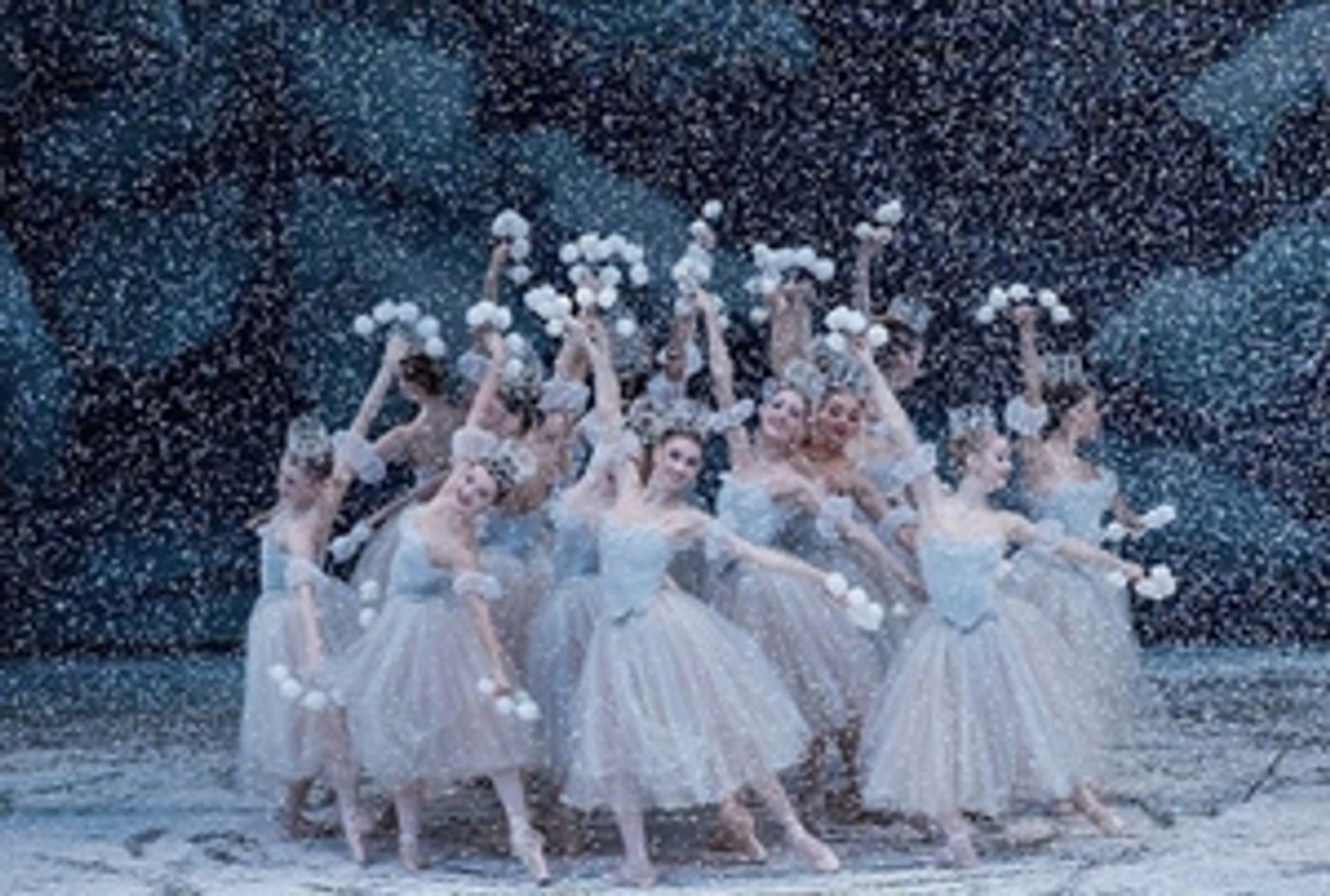Review: New York City Ballet's THE NUTCRACKER

Nostalgic rose-colored glasses so tint few works as The Nutcracker. Its music, its images, its audience of children, either mesmerized or fidgeting in their Sunday best, have become annual staples of the Christmas season. Balanchine's 1954 staging of the ballet is its quintessential manifestation. As with all things Balanchine, it is a feat of harmonious contradictions; instead of his more academic ventures that seek to marry the aristocratic form with the fashionable modern, The Nutcracker is a practice in elegant nostalgia. Perhaps Balanchine felt this nostalgia for a Russia that was long gone; Stalin died the previous year, leaving behind a Russia that held no resemblance to the first act fete. That the choreographer was capable of conjuring these charming visions of a dreamlike childhood, while not sacrificing his pioneering vocabulary, is a testament to his genius
The first act of The Nutcracker is a rare example of storytelling from Balanchine. More silent film than culinary significant dance work, it features the democratic nature of the art form by integrating the daily cultures of people's homes on stage. It also highlights an intergenerational cast, a unique and central aspect of Balanchine's production. These children include Tanner Quirk as Herr Drosselmeier's nephew, soon to be the nutcracker himself, and Charlotte Nebres as Marie. How these two can conduct themselves with such presence at so young an age is beyond me. Despite the relatively reserved choreography that marks the start of The Nutcracker, there are brief glimpses of the choreography as it will continue to blossom throughout the performance. In one of these moments, Kennard Henson, dancing a puppet that Herr Drosselmeier brings to the children, stuns the audience with his uncanny precision and determined form. The first act similarly ends on a high note with the Dance of the Snowflakes, representing Balanchine's unique capacity to create colorful chaos that is both elegant and thrilling.
The second act of The Nutcracker is a series of vignettes where various dance styles, cultures, and sweets are synthesized into a single aesthetic metaphor. Though well intentioned, it is problematic, like an overenthusiastic tour of Epcot. While some of these treats have not aged well for contemporary tastes, they can still delight. Highlights include Roman Mejia's vigorous take as the lead in Candy Canes. He has a rousing capacity to defy gravity by way of sheer enthusiasm. KJ Takahashi's leaves nothing on the stage as he throws himself into an expressive rendition of "Tea." These sweets end with the Balanchine masterwork, "The Waltz of the Flowers." Except for Serenade, there is perhaps no better display of Balanchine's mastery of the corps de ballet. He is able to honor Petipa's sense of balance while commanding pure kinetic energy. "The Waltz of the Flowers" is as fractal as a cubist painting but has the human warmth of Chagall. Performing amid this shower of pink tulle is Teresa Reichlen as Dewdrop. She gives a commanding presence worthy of a mythical figure. Relatively unadorned, she blends the breathing fabric around her with commanding structuralism. She is what one imagines when they hear the words "neo-classical." She is dignified, without being austere, and commanding through her sheer artistic integrity. Finishing off the work is Indiana Woodward as the Sugarplum Fairy and Anthony Huxley as her cavalier. While seeming a little distracted during the Sugarplum Fairy variation earlier in the evening, her final velveteen pas de deux with Huxley was mesmerizing. Huxley, a strong and selfless collaborator in every pas de deux I have seen him in, lifts the final moments of the ballet into the pristinely imperial. With Woodward, whose simple, supple landing of a double pirouette earned an audible gasp, the structural trajectory of The Nutcracker as an initiation to classical dance as it reaches its apotheosis.
Like the choreography, Tchaikovsky's score, here under the masterful eye of conductor Andrews Sill, is as overwhelming and timeless as it is accessible and welcoming. Scenery by Rouben Ter-Arutunian honors the imagination of childhood, without feeling sloppy or patronizing. More than all perhaps, Karinska's costumes are among some of the most iconic of Balanchine's repertoire. By its nature, The Nutracker is a mixed bag, something for everyone of all ages and all tastes. If ever you find a sweet not to your liking, there will be one in shortly to take its place. The importance of this work is in its thoroughness, its expansiveness, and the treasured place it holds in the childhoods of audience members everywhere.
Photo Credit: Paul KolnikReader Reviews
Videos

